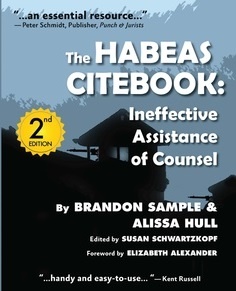Scent of Death Evidence Admitted at Indiana Murder Trial
by Sam Rutherford
In May 2024, John Hallett, 54, of Michigan City was found guilty of murdering his roommate and then dismembering the body. Prosecutors obtained the conviction by relying on novel “scent of death” evidence to prove Hallett had stored the remains in his basement before throwing them in the trash.
In 2017, Hallett choked his roommate, Paul Gonzales, 64, to death and then left his body on the basement floor of their residence for several months. Hallett then dismembered the corpse with a hacksaw and disposed of the remains in municipal trash cans. The body likely ended up in a landfill and was never recovered.
Five years later, Hallett contacted police and confessed to the killing. Without a body, however, police were concerned they wouldn’t get a conviction. They had to find a way to prove that Hallett stored a corpse in his basement. Cadaver dogs were previously alerted to signs of decomposition in the basement, but that evidence needed to be confirmed.
An officer with the Michigan City Police Department contacted forensic scientist and professor John Goodpaster for help. Goodpaster specializes in what he calls “chemistry for the public interest.” He is a professor in the Department of Chemistry and Chemical Biology as well as the Forensics and Investigative Sciences program, both at Indiana University.
Goodpaster has developed a method for determining whether a body was left to decompose at a particular location. It’s called scent of death. As a body decomposes, it emits various chemical compounds that smell like a potpourri of cabbage, garlic, overripe cheese, and decaying fish.
Police pulled up fragments of the basement floor where they believe Hallett stored the corpse, as well as other pieces of the floor as control samples. Goodpaster used a gas chromatography-mass spectrometry, a highly sensitive instrument used for detecting compounds at low concentrations, on the fragments.
He found carboxylic acids compounds, consistent with decomposition, in some of the concrete samples. According to Goodpaster, the concrete had no noticeable scent, since several years had passed. However, in an effort to clean up, Hallett painted the concrete floor, which may have sealed in the compounds and enabled Goodpaster to detect them.
Prosecutors then had to convince the trial court to admit this evidence. The judge held an hour-long Daubert hearing, named for the landmark decision in Daubert v. Merrell Dow Pharms., Inc., 509 U.S. 579 (1993), in which the U.S. Supreme Court enunciated a legal test many courts rely on to determine whether novel scientific evidence is admissible.
The judge ultimately ruled that scent of death evidence satisfies this standard and permitted Goodpaster to testify about his findings at Hallett’s trial. According to Goodpaster, “That set the precedent in the state of Indiana.”
Hallett was sentenced to 65 years in prison for the murder. He is likely to appeal the conviction by challenging the admission of scent of death evidence at trial.
Sources: wsbt.com, news.iu.edu
As a digital subscriber to Criminal Legal News, you can access full text and downloads for this and other premium content.
Already a subscriber? Login





